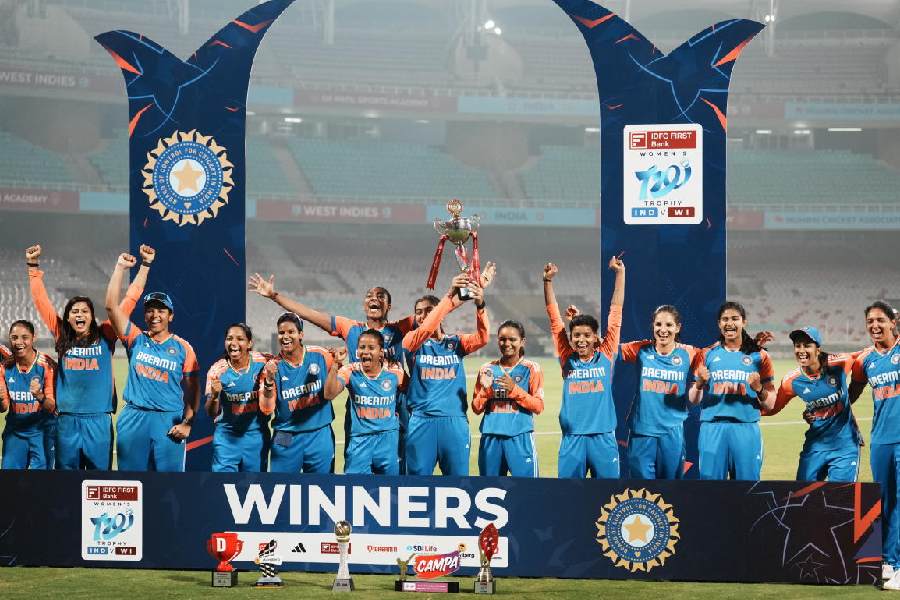West Bengal, Calcutta in particular, has been known to be a politically volatile place. But the crime at the R.G. Kar Medical College and Hospital and its aftermath have thrown up some new trends in the politics of protest. These trends may have long-term implications for how party politics plays out in the near future in this state. There are new strengths emerging regarding the power and the influence of the ordinary citizen. Those of us who find the everyday politics of the nation impotent, unresponsive, coercive and predictable in how things play out will find many features in these protests that could yield a nascent image of the things to come.
The first feature pertains to how party politics was jettisoned by the protestors because they were protesting precisely against its stranglehold on professional and private lives. The R.G. Kar protest is not an apolitical movement; the demands are political in nature even though the programme is somewhat nebulous still. However, the control of the direction of the movement has been delinked from all political parties. It is the reflection of a complex feeling that political leaders do not have the interests of the citizen in mind; that they have their own agenda of vying for power or retaining power; and that all political parties are essentially the same in terms of their behaviour when in power. This trend has been noticeable recently in other movements too, such as the farmers’ movement and the protest against the Citizenship (Amendment) Act. There was a lot of support from citizens in these against State reprisals. Political parties tried to leverage the movement for their own advantage. However, the dominant voice remained independent of parties. The issues were supposed to have widespread significance. In the case of the doctors’ movement, the universal significance is supposed to be even wider — one can ignore farmers or not care about minority identities but it is well nigh impossible to ignore the goings on in a hospital or what happens to a doctor on duty. The core issues of unsafe hospitals and corruption in the healthcare sector that affects the quality of treatment touch everybody — rich and poor, young and old. Hence the intensity of the anger that has spread across the state, the nation, and large parts of the world. The trust deficit with political parties is at rock bottom.
The power of social media to influence and organise large numbers of people in different geographies for the same cause was leveraged, albeit unintentionally, in this regard. The young lady who posted the call to ‘Reclaim the Night’ on a social media platform was not sure about the consequences, least of all the scale of the response. The response on the night of August 14 was surprisingly massive. In fact, the scale of the response was discernible from early evening that day and this possibly led the electronic media to be present in full strength to cover the protests. Social media continues to play the role of a critical forum where debates take place, ideas are floated, and a number of cultural embellishments, such as music, songs, and poetry, are born. Social media, despite a number of negative features, has emerged as a powerful weapon in the cause of peaceful social protests.
During the eventful first few days when the movement was at its peak, all major political parties tried to gain advantage from the response. The Bharatiya Janata Party tried to call a strike and demonstrate in front of Nabanna, the state secretariat. It turned out to be a fight between the police and the party workers. The BJP did not gain any advantage and the doctors quickly made it clear that they were not party to these kinds of protests. The Communist Party of India (Marxist)’s youth wing was present at R.G. Kar from day one. It made the mistake of carrying DYFI flags in front of R.G. Kar on the night of August 14 despite the request that no one should carry political party flags or symbols. When chaos broke loose that night, some hoodlums may have grabbed the flags and strutted in front of television cameras, making the party vulnerable to attacks from the Trinamool Congress.
The response from the TMC has been confused and immature. The events were obviously embarrassing for the party since the chief minister holds both the home and health portfolios in the cabinet. The response of the chief minister reflected nervousness. Otherwise, why would a chief minister holding the home and health portfolios walk the streets of Calcutta demanding capital punishment for the perpetrator? The response of the rest of the TMC leadership was all over the place: some criticised the rape-murder without mentioning the probable cause and the atmosphere in the hospital. Others took a defensive line wherein doctors were sharply criticised for staying away from work.
In all this, as the movement continues and the investigation progresses, the TMC has lost the most ground. There are a number of reasons for this. First, corruption is nothing new in India and West Bengal, nor is coercive politics. When Partha Chatterjee or Jyotipriya Mallick were arrested, or even when Anubrata Mondal was sent to prison, the reactions of the TMC were muted. The police were always known to be corrupt and cosy with those in power. The chief minister had not been implicated in corruption in the minds of the ordinary citizen. In this case, however, many of Mamata Banerjee’s reactions were defensive. The details of the events, as they emerged, made it clear that there was a deep conspiracy that involved the higher echelons of the administration. Specific slogans were thus raised against the chief minister, not by a political party but by the protesting doctors and the citizens out on the streets. The perception in most people’s minds is that the chief minister could not have been unaware of the state of medical education and the work culture in hospitals. Indeed, if she was aware, she would have to be one of the most inefficient ministers in the history of West Bengal. Hence the feeling of being let down by a chief minister who had been considered so far as being maverick in style but ethically clean.
Corruption has become all-pervasive and systemic. Coercive politics has become the rule of the land. No government in the state has ever had so many allegations of unethical and violent behaviour hurled at it. No government in the state has ever had so many needles of suspicion pointing at the top rungs of the administration. The toxin of ‘threat culture’ holds sway over all institutions where the government has control. A grim picture of the state has emerged. On the other hand, citizens have had a taste of their own strength to hold the powerful accountable. One can only hope that this will be the beginning of corrections and change.
Anup Sinha is former Professor of Economics, IIM Calcutta











